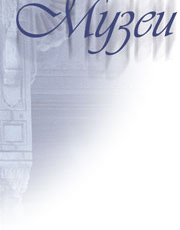
The Russian Museum
The Russian Museum in Leningrad is one of the richest treasuries of Russian art. Its collections comprise about 250,000 items, among them objects of old Russian art, specimens of folk art and decorative applied arts, numerous paintings, sculptures, prints, drawings and water-colours illustrating in a nearly perfect ensemble the history of Russian art from the ninth century to the present day.
In 1898, when the doors of the Museum were first opened to the general public, the collection included about 2,300 items, mainly paintings and drawings. In the course of the first two decades of its work the Museum made relatively few acquisitions of importance. Its exhibitions inadequately illustrated the main trends in the evolution of Russian representative arts.
After the Great October Socialist Revolution, the collection grew considerably as the result of Government policy to nationalize private collections, to redistribute museum property, and to purchase valuable art objects from private owners. A Department of Decorative Applied Arts and a Department of Folk Art were formed, and the foundations of the Department of Soviet Art were laid.
In their present form, the exhibitions of the Russian Museum strive to illustrate consistently the evolution of representative arts in Russia. The principal trends are shown as parts of a single process of development.
The picture gallery of the Russian Museum comprises a great number of works by prominent Russian painters. Though only 48 pictures are reproduced in this album, they illustrate the most significant phenomena in Russian art from the eighteenth century to this day. Apart from well-known pictures, the album includes lesser known works by painters who have also contributed to the development of Russian art.
|
ПОИСК:
|
© MUSEUMS.ARTYX.RU, 2001-2021
При использовании материалов сайта активная ссылка обязательна:
http://museums.artyx.ru/ 'Музеи мира'
При использовании материалов сайта активная ссылка обязательна:
http://museums.artyx.ru/ 'Музеи мира'